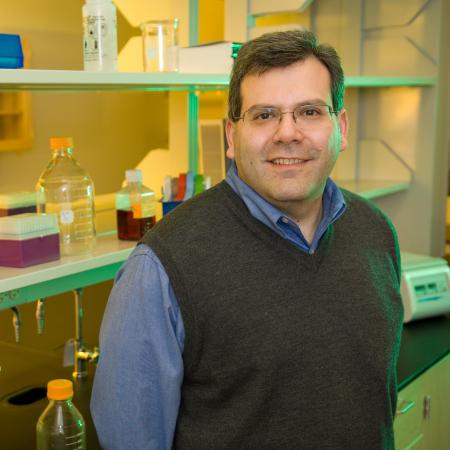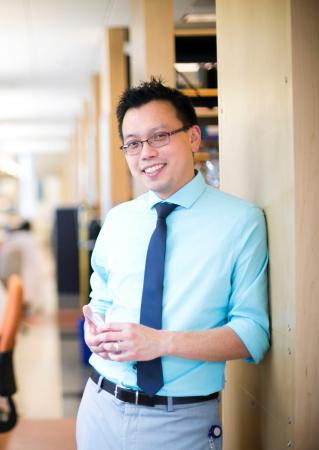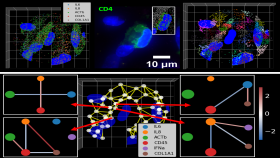Three researchers with the Petit Institute for Bioengineering and Bioscience at the Georgia Institute of Technology were recognized for innovative discoveries recently at Emory University’s 12th annual Celebration of Technology and Innovation. All three are faculty members of the Wallace H. Coulter Department of Biomedical Engineering at Georgia Tech and Emory.
Taking the top honor was Hee Cheol Cho, whose Messenger RNA-based Biopacemaker won the Innovation of the Year Award. for a project. He collaborated with fellow Coulter Department/Petit Institute researcher Phil Santangelo. Also honored was Wilbur Lam, who was recognized along with his collaborator, Erika Tyburski, for Significant Event of the Year.
Here’s a complete list of the award winners (who were recognized by Emory’s Office of Technology Transfer) and profiles of their projects:
Innovation of the Year: Messenger RNA-based Biopacemaker
Hee Cheol Cho, PhD (pediatrics)
Millions of people experience arrhythmias (irregular heartbeats) due to heart disease, aging or congenital defects. The only medical intervention is implantation of an electronic cardiac pacemaker, which includes electrical wires fixed to the heart muscle and an electronic generator implanted under the chest skin, delivering electrical currents to stimulate the heart. Although they work well, the devices can get infected, cannot adjust the pacing rate on-demand, need battery changes, and are too big for pediatric patients.
Cho and his colleagues have envisioned hardware-free “biological pacemakers” that mimic the natural pacemaker in the heart and solve problems associated with device pacing. They have developed a gene therapy, successfully converting ordinary heart muscle into a biological pacemaker in vivo. Cho teamed up with Santangelo at Georgia Tech to deliver the gene as a messenger RNA, which sidesteps the problems associated with viral gene therapy vectors. They are anticipating a clinical trial in which the biological pacemakers will serve as adjuncts to electronic devices for patients with temporary pacing needs. If successful, the initial trial could open the door to a $5 billion (and growing) global pacemaker industry.
Deal of the Year: Meissa Vaccines Inc. – RSV Vaccine
Martin Moore, PhD (pediatrics)
In 2017, Emory University entered into a license agreement with Meissa Vaccines for respiratory syncytial virus (RSV) vaccines. RSV is a common respiratory virus that usually causes mild, cold-like symptoms, with most adults recovering in a week or two. RSV can be serious, even deadly, however, especially for infants and older adults with compromised immune systems. Each year in the United States, more than 57,000 children younger than 5 years old are hospitalized due to RSV infection. Additionally, about 177,000 older adults are hospitalized annually in the U.S. with an RSV infection, resulting in approximately 14,000 deaths.
Moore and his colleagues developed a live attenuated RSV vaccine using synthetic biology and reverse genetics to recode non-essential RSV genes and improve stability. This vaccine is the lead product being developed by the licensee, Meissa Vaccines. The company has been awarded a Fast Track SBIR grant by the National Institutes of Health entitled "Development of live attenuated respiratory syncytial virus vaccines with novel thermal stable fusion protein." In addition to the $1.56 million NIH grant, Meissa also received a seed investment from FundRx, an innovative healthcare and life sciences venture capital platform based in New York City. This investment is intended to help finance the company as it moves toward an investigational new drug (IND) filing for the vaccine.
Start-up of the Year: EMRGE, LLC
Felmont Eaves, III, MD (surgery)
Felmont F. Eaves III, is medical director of the Emory Aesthetic Center. He is the founder of Emory startup EMRGE, LLC, a medical device company developing simple, cost-effective solutions for wound care, wound closure and scar treatment. The company’s three-part platform consists of force-modulating tissue bridges, variable resistance backings and bidirectional linear fixators. Together, these technologies offer a few key needs in wound care: approaches that don’t require anesthesia, don’t need active removal, minimize risk of infection and reduce scarring. EMRGE plans to market products by the end of 2018.
Eaves is a previous president of the American Society for Aesthetic Plastic Surgery and serves as director of the American Board of Plastic Surgery, the board that certifies plastic surgeons nationally. Eaves has received numerous awards and honors including being recognized as one of the Best Doctors in America continuously for more than a decade.
Significant Event of the Year: Sanguina – AnemoCheck 510(k) FDA Approval
Wilbur Lam, MD, PhD (pediatrics)
Erika Tyburski, Chief Operating Officer, Sanguina
Anemia is a condition in which an individual’s blood has a lower-than-normal amount of red blood cells or hemoglobin, resulting in the body not receiving enough oxygen-rich blood. Currently, anemia is monitored via a traditional complete blood count (CBC) test done at the doctor’s office. This type of testing is both invasive and is not appropriate for home testing or self-monitoring purposes.
Lam and Tyburski, along with colleagues, developed a disposable color-based screening test for anemia. This test is used for the determination of hemoglobin level and estimation of hematocrit percentage in whole blood. Each test requires less than half a drop of blood from a finger stick, making it considerably more practical for home use. Blood is collected from the finger stick into a small round device containing a proprietary mix of reagents that react with hemoglobin present in the sample, eliciting a color change. After mixing and waiting for two minutes, the resulting color correlates to the patient’s hemoglobin level. In 2017, Sanguina, Emory’s licensee, received 510(k) market clearance from the FDA, and in 2018 plans to launch the product for consumer sale.
CONTACT
Efrem Hill: efrem.hill@emory.edu, 404-727-8431
Media Contact
Keywords
Latest BME News
Commercialization program in Coulter BME announces project teams who will receive support to get their research to market.
Courses in the Wallace H. Coulter Department of Biomedical Engineering are being reformatted to incorporate AI and machine learning so students are prepared for a data-driven biotech sector.
Influenced by her mother's journey in engineering, Sriya Surapaneni hopes to inspire other young women in the field.
Coulter BME Professor Earns Tenure, Eyes Future of Innovation in Health and Medicine
The grant will fund the development of cutting-edge technology that could detect colorectal cancer through a simple breath test
The surgical support device landed Coulter BME its 4th consecutive win for the College of Engineering competition.
New research from Georgia Tech helps doctors predict how therapies will interact with a child's immune system, potentially improving outcomes and reducing risks.










